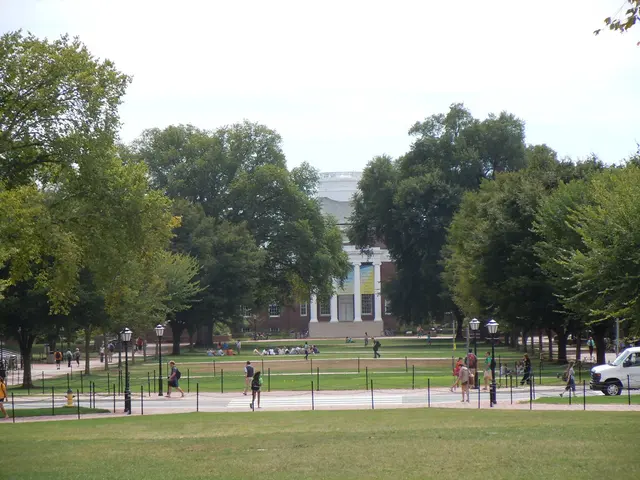Strategies for Safely and Lawfully Disabling a Drone: Crucial Steps Outlined
In the ever-evolving world of technology, drones have become a common sight in our skies. However, their presence over private property can raise concerns about privacy and safety. Here's a comprehensive guide on how to navigate the current U.S. regulations when dealing with suspicious drone activity.
The Federal Aviation Administration (FAA) plays a crucial role in regulating drone operations. Their focus is primarily on safety and airspace use, ensuring that drones adhere to flight altitude limits (typically under 400 feet), flight paths, and registration and pilot certification requirements for some drones.
On the other hand, privacy laws vary by state. Many states prohibit using drones to record private property or individuals without consent. For instance, California explicitly bans capturing images or audio of people in places where they have an expectation of privacy without permission. Violations can result in significant civil fines and private lawsuits for invasion of privacy.
When encountering a suspicious drone, it's essential to report the incident to local law enforcement. They are quicker in responding than federal authorities and can accurately record what happened. Local police can investigate trespass or harassment claims under state law.
It's important to note that interfering with drones, such as using signal jammers, remains illegal for civilians. However, the FAA Modernization and Reform Act clearly defines conditions allowing the use of protective methods like geofencing and FAA-approved tracking systems. These methods can help protect your home by creating virtual safety boundaries and detecting drones flying without permission.
New federal rules, set to take effect in 2025, aim to improve drone safety and enforcement mechanisms. These updates include flight beyond visual line-of-sight (BVLOS) under controlled conditions, cybersecurity requirements, and coordination with drone traffic management systems.
In summary, private property owners concerned about suspicious drone activity should first check state-specific privacy laws to understand their rights, report incidents to local law enforcement, and may pursue civil remedies for privacy violations, while safety-related drone violations fall under FAA jurisdiction and applicable criminal statutes. The regulatory landscape is evolving, with continued federal efforts to better integrate drones into the national airspace while addressing misuse risks.
Remember, before taking any action, consult with a local aviation safety expert or an attorney to ensure you're acting within the law. By staying informed and taking the right steps, you can protect your personal airspace without violating aviation laws.
- In the realm of technology, apart from drones in the skies, concerns about privacy and safety also arise in areas like cybersecurity, data-and-cloud-computing, and home-and-garden.
- Education-and-self-development resources can provide insights on navigating these digital landscapes, ensuring secure connections and privacy-protection measures at home.
- On a broader scale, politics plays a significant role in shaping these technological regulations and policies, including those governing drones and other aspects of technology.
- The sports world, particularly American football (football, NFL, and NCAA football), is another area where technology is evolving rapidly, with drones used for broadcasting games and monitoring player performance.
- General-news outlets cater to the public's need to stay informed about the latest technological advancements, drone regulations, and privacy laws in various states.
- Crime-and-justice reports often highlight cases involving drone misuse, demonstrating the need for stricter regulations and more effective enforcement mechanisms in the drone industry.
- As technology continues to be integrated into our daily lives, it's crucial to stay informed, seek legal advice, and prioritize safety to protect ourselves, our property, and our personal privacy.




